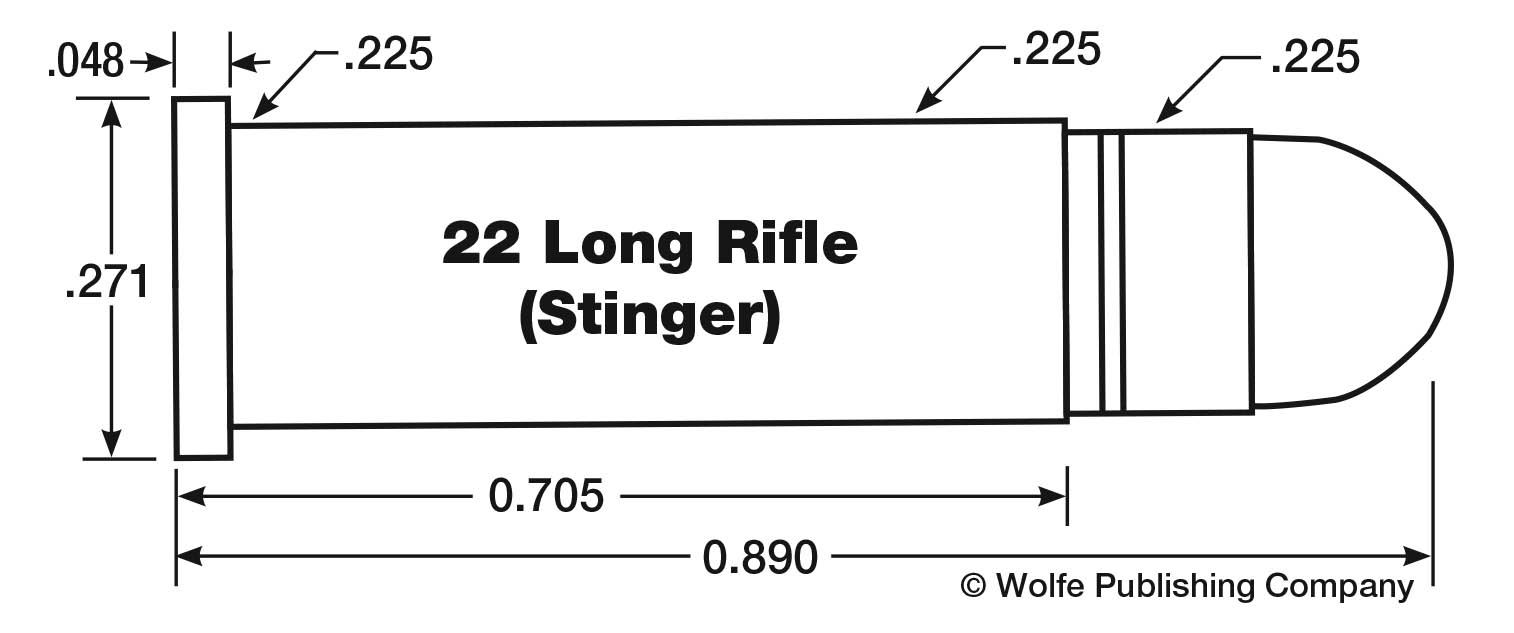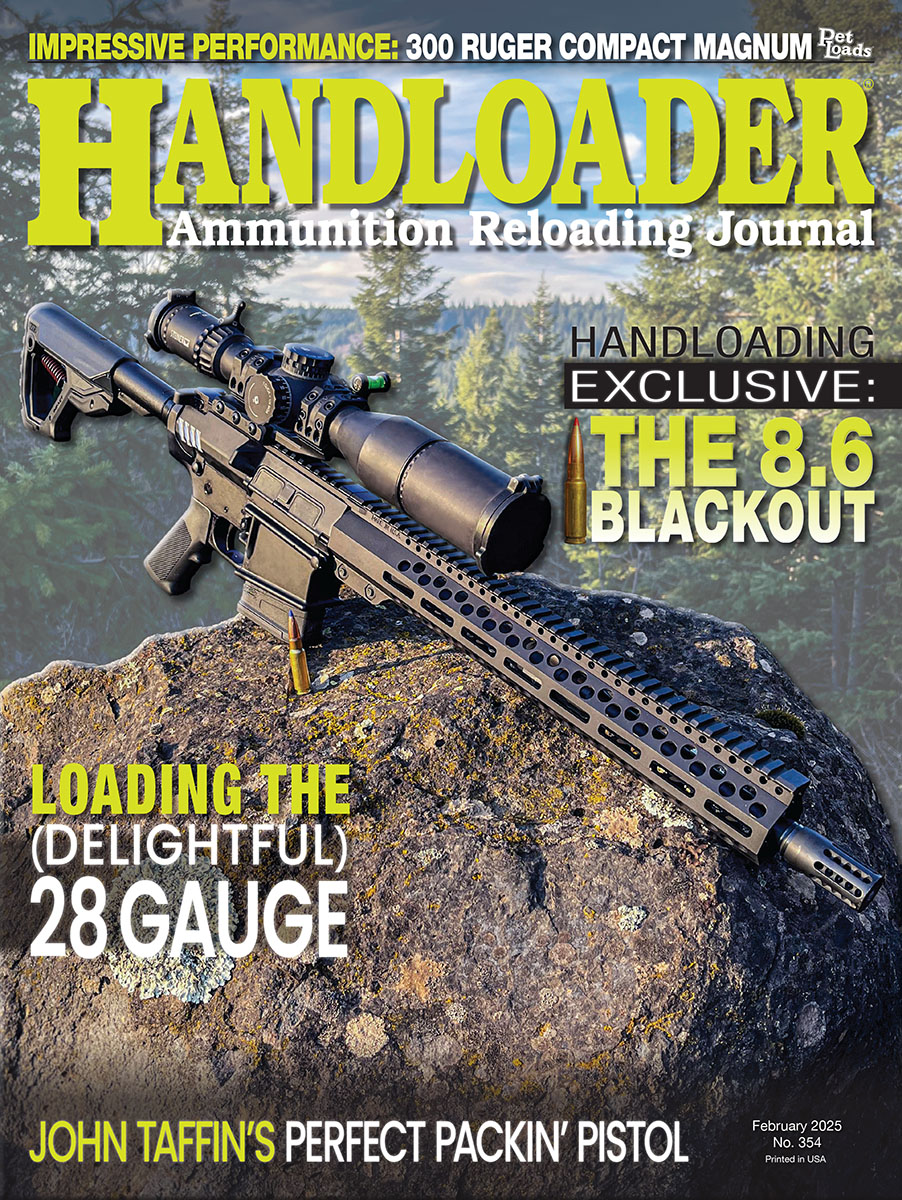With the conclusion of World War II, sanity finally returned to the world (at least for a while). As the industry retooled to produce peace-time products, demand for shotshells and 22RF cartridges reached numbers that are exceeded only by the current U. S. national debt.
The first rimfires available were 22 Shorts, Longs and Long Rifles. A 1947 Remington list shows seven Long Rifle (LR) rounds. Four used the common 40-grain lead roundnose bullet having either a dry wax coating or somewhat “greasy” lube applied. Velocity was shown as 1,100 to 1,180 feet per second (fps) at the muzzle. This velocity was considered standard for the LR round at the time. Two of the remaining rounds used the 40-grain slug, and one a 36-grain hollowpoint. Producing 1,375 to 1,400 fps, they were labeled High Velocity or Long Range. First possible in the 1930s due to smokeless powder development, accuracy was not particularly good, but small game hunters wanted the extra power and flatter trajectory. Western (Olin) listed two standard velocity and two high velocity loads. Winchester (also Olin) loaded three of each.
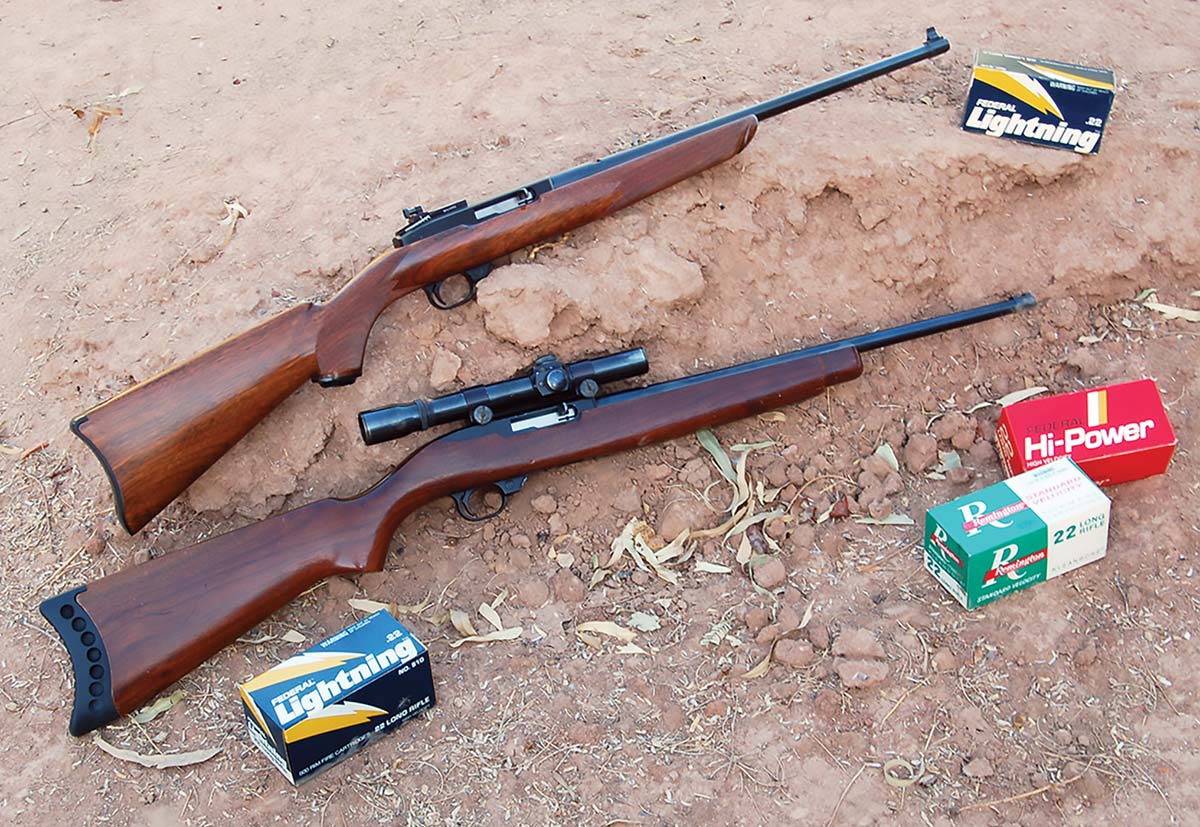
The rifle that pushed inexpensive 22 LR cartridge development was the millions upon millions of Ruger 10/22s.
Improvements to rifles and ammunition had been going on in fits and starts since the 22 LR came into being. This was due in large part to target shooters who wanted to use the cartridge outdoors at 100 and 200 yards. Along this line, the chronicles tell us that Winchester recorded an average 10-shot group diameter at 200 yards by Winchester M52 target rifles using Winchester selected match ammunition. In 1920, the group was just over 3 inches; by 1929, it was 2 inches, and in 1937, it was 1.25 inches. This is almost unbelievable for the time. Perhaps the shooter did what is becoming more common today, shooting a group, then discounting one or two “flyers.” The remaining shots are then said to be the rifle’s “actual” accuracy capability.
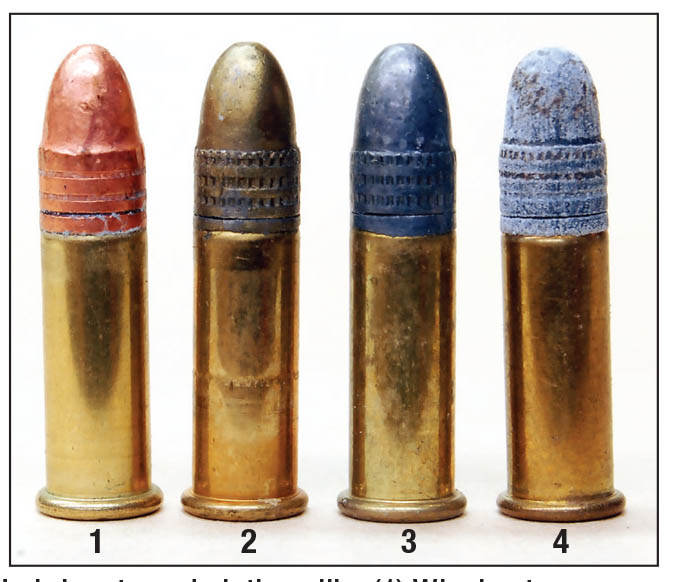
Lubricants and platings like (1) Winchester Lubaloy, (2) Remington Golden Bullet and (3) hard clear plastic prevent (4) pre-World War II era oxidizing of lead bullet.
By 1950, the high velocity (1350 to 1400 fps) target loads were largely gone. The high velocity hunting loads remained. Target cartridges used the standard 40-grain roundnose bullet, but at speeds in the 1,150 fps range. A good example is Western Super Match Mark II. Its bullet lube was “grease” (whatever that meant) while hunting rounds were “wax coated.” Velocity was listed as 1,145 fps. The company recommended using Western Xpert standard velocity cartridges for practice because their bullets and velocity were identical to the more expensive Mark IIs.
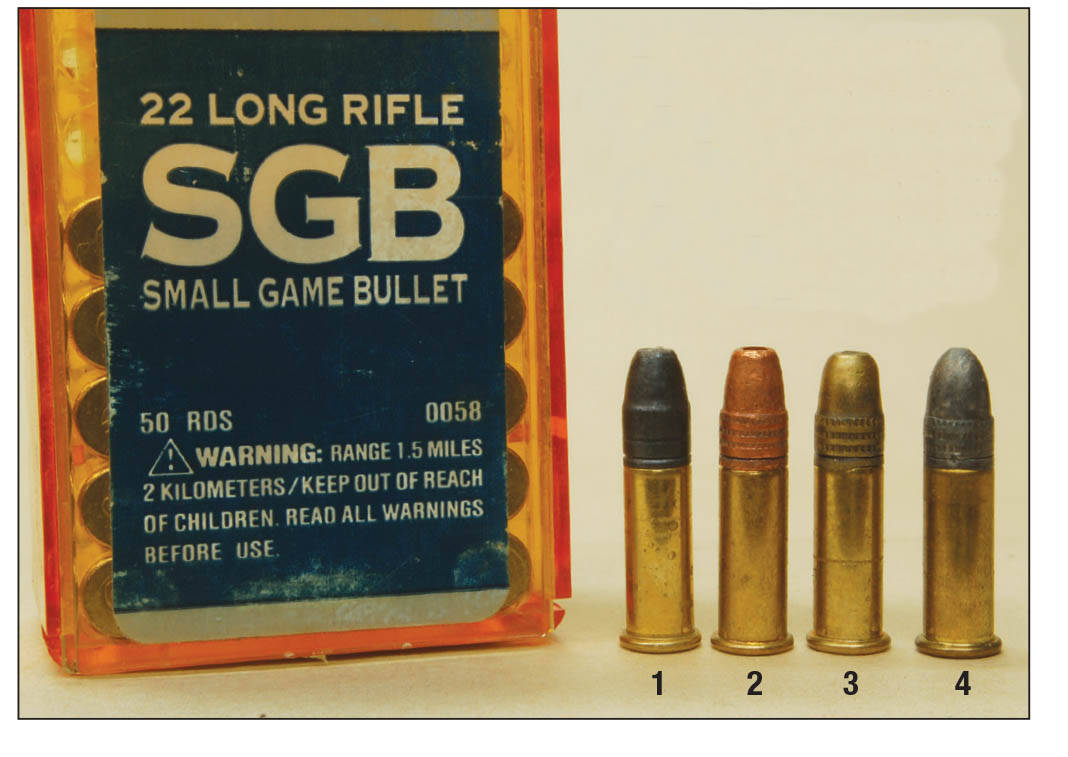
CCI’s (1) flat-tipped solid Small Game Bullet isn’t much flatter than (2) Winchester or (3) Remington hollowpoints, but noticeably different than a (4) standard 22 LR round.
It is not certain how much rifle-folk knew at the time about the sound barrier and bullets crossing it; they just knew the lower speed loads shot smaller groups. They were learning because in 1952 Western announced its Super-Match Mark III cartridge at the Camp Perry Tournament. Muzzle velocity was reduced to 1,105 fps, a new bullet profile was used, and a new, thinner bullet lube was employed.
About 1958, Remington announced its now famous Golden Bullet, a gold-colored bullet plating that made a very attractive loaded round. By about 1960, Remington had two lead match cartridges, one standard velocity (1,145 fps) and two Hi-Speed with Golden Bullets, one pushing a 40-grain slug at 1,335 fps and the other a 36-grain hollow point at 1,365 fps muzzle velocity. Winchester had the same thing but with plain lead bullets. My Federal Cartridge Co. dated lists begin in 1975. Earlier publications show high velocity rounds with a 40-grain solid bullet at 1,285 fps and a 38-grain hollow point giving 1,315 fps from a 24-inch barrel. There was also a standard velocity load, achieving 1,045 fps.
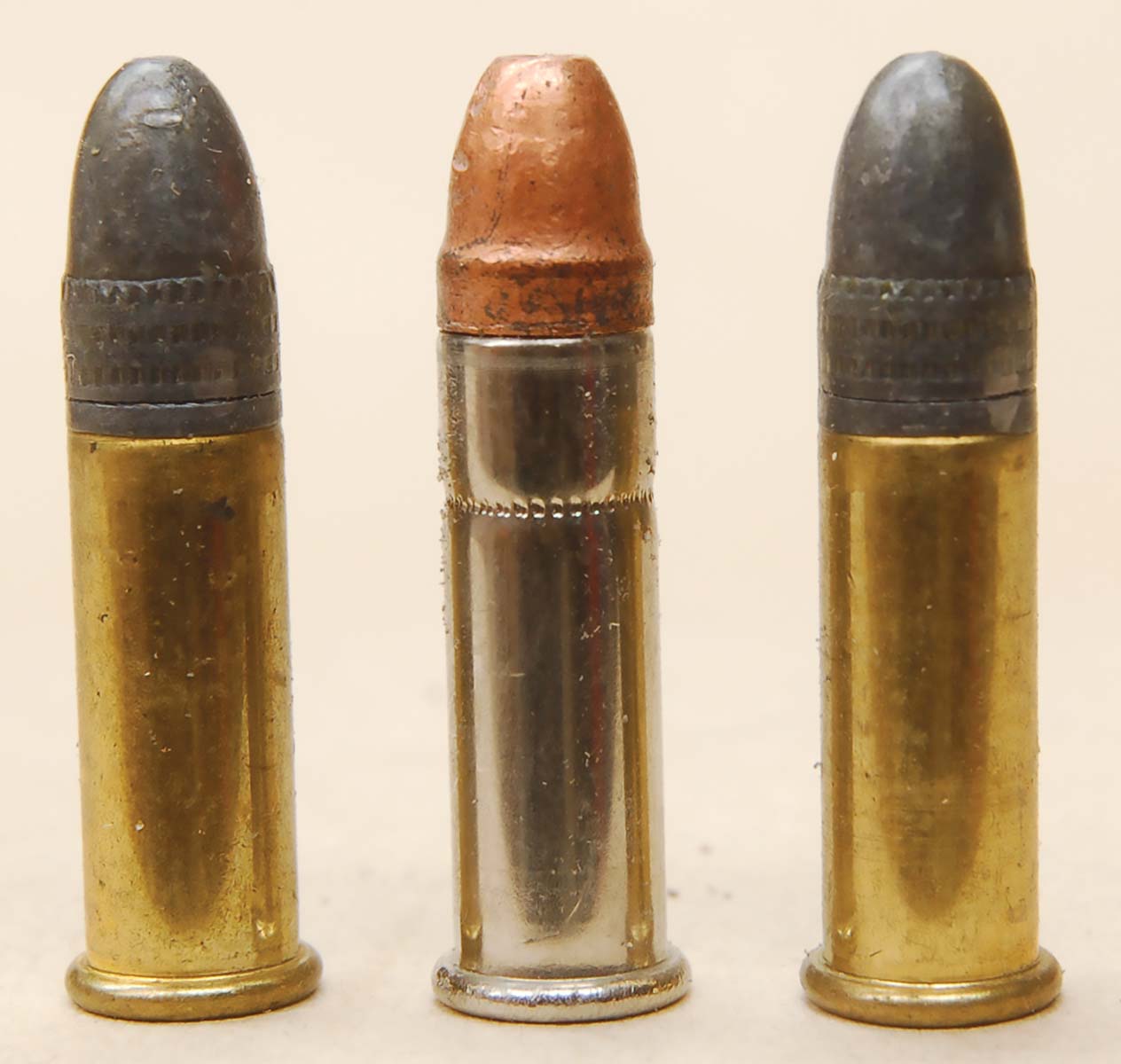
The CCI Stinger's 0.1-inch longer case (center) and shorter bullet are obvious when compared to the common 22 LR on either side.
Now began the 22 LR marketing war started by Cascade Cartridge Inc. (CCI) with the introduction of its Stinger round in 1977. Because industry standard chambers were quite generous in length to allow for fouling of early smokeless powders, the case of the Stinger could be lengthened some 0.1 inch, a short 32-grain bullet seated, and not exceed standard LR cartridge length. Muzzle speed of the new round was listed as 1,640 fps.
CCI also sold the standard 40- grain bullet at 1,255 fps, the 36-grain hollowpoint at 1,280 fps, and the 40-grain standard velocity, giving 1,138 fps. We will call these obligatory loads since everyone loading LRs offered them. A rifle match load called Green Tag pushed a 40-grain round nose to 1,138 fps, and another called Pistol Match used the same bullet at 1,070 fps.
The year 1990 saw CCI offer a Mini-Mag +V pushing a 32-grain slug to 1,450 fps and a Small Game Bullet (SGB) cartridge using a 38-grain flatnose at 1,235 fps. Both are interesting ideas. In 1996, the Blazer round, using the same bullet and speed as Green Tag ammunition, appeared. It was listed in a bulk pack of unknown size. In 1996, the Mini-Mag +V is gone, and in 1999, a 22 Silhouette appears with a standard 40-grain bullet giving 1,255 fps muzzle velocity.
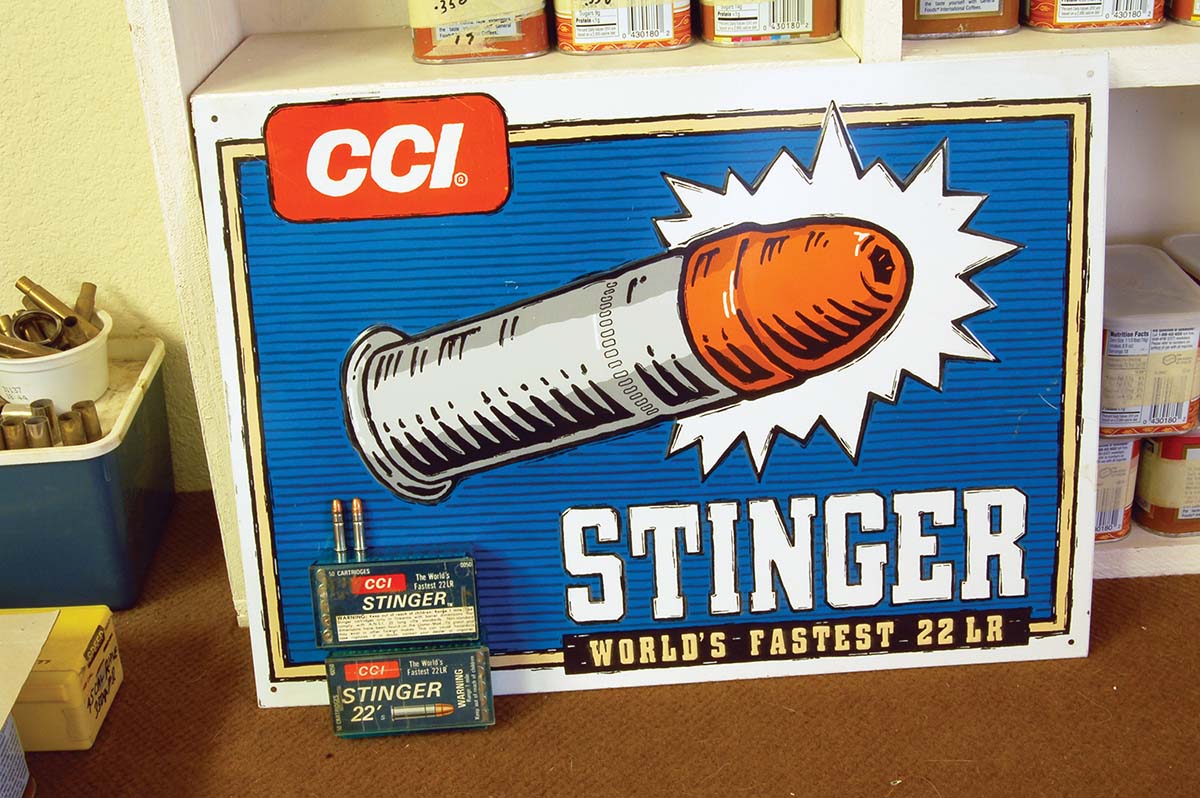
STINGER WORLD’S FASTEST 22 LR became available in 1977.
Winchester-Western sold the obligatory two high-speed plus one standard velocity cartridges, along with a couple of match loads that were dropped in 1982. It made a long-cased round similar to the CCI Stinger called Expediter in 1978 and dropped it in 1982. A Super Silhouette using a 42-grain truncated cone bullet at 1,220 fps and a Hyper
Velocity Super-Max featuring a 34- grain hollowpoint for 1,500 fps were announced in 1985. Neither lasted very long. A round called DynaPoint lasted a bit longer. At the turn of the century, the three obligatory rounds plus economy rounds titled T22, Wildcat and Expert are listed, the latter three in 500-525 cartridge bulk packs.
As mentioned earlier, Remington hit a home run with its Golden Bullets. It had obligatory rounds as well. The company made match cartridges until dropping them in 1982 due to European imports. In competition, it’s the results that count. Remington did not load a long-cased round but did make a cartridge named Yellow Jacket using a 33-grain truncated cone hollowpoint at 1,500 fps in 1979 and a Viper with 36-grain truncated cone solid at 1,410 fps in 1982. Nothing changed until 1993 when new rounds called Thunderbolt, Cyclone, and UMC LR Hi-Speed appeared. All were simply copies of the two highest velocity obligatory rounds without Golden Bullets. They were described as economy rounds.
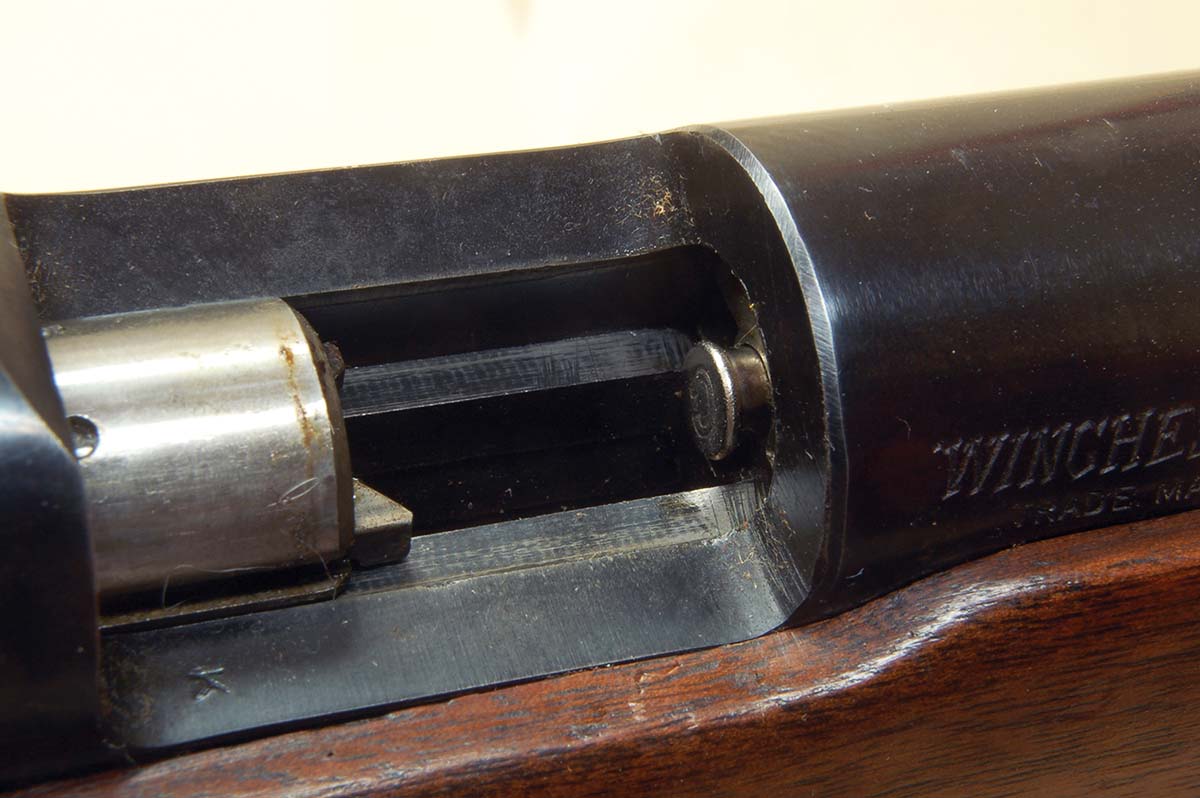
The CCI Stingers 0.1-inch longer case (center) and shorter bullet are obvious when compared to the common 22 LR on either side.
Federal Cartridge Co. (FCC) also made the three obligatory rounds with the fastest two, titled Hi-Power and Standard Velocity, Champion. FCC also produced ammunition for big retailers like Sears, Roebuck & Co.; Montgomery-Ward; Gambles and Western Auto. Unique boxes were provided until these outfits dropped ammunition sales. A cartridge called Silhouette became available in 1982, but no ballistics were given. It was dropped in 1992. The Lightning economy load came about in 1983 with a 40-grain solid bullet and a velocity of 1,255 fps. Also listed was a Spitfire using a 33-grain bullet at 1,500 fps. It lasted until 1992, which also saw the Hi-Power relabeled as Classic. Two Subsonic Match loads were listed in 1996 and 1997. Ballistics were 40-grain bullets at 1,080 fps. FCC also started producing bulk packs (325 rounds) of the economy loads.
There is no space for all the imports, 22 LRs, not even a single list of them. They came from at least Mexico, South America, Russia, Several European countries and South Korea. Especially remembered are those in grey boxes decorated with line drawings of weird animals. The sound of the report varied, and sometimes a bullet got stuck in the barrel! Then there were the plain white boxes with only “Made in Russia” and “Steel cases” printed on the outside. It functioned okay in bolt guns, not so much in autoloaders. Swing-out cylinder revolvers wouldn’t extract six fired cases without the help of a hammer and punch.
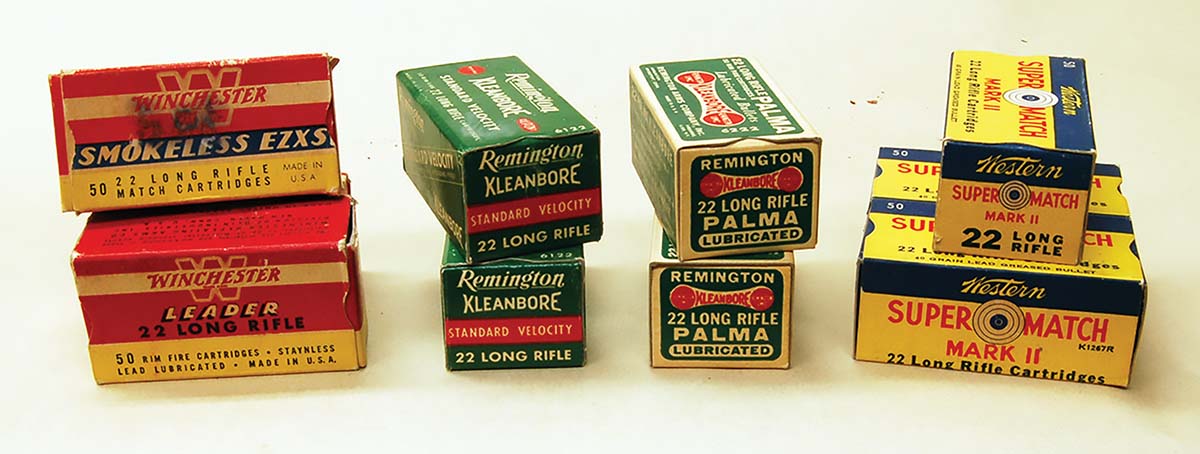
World War II period match ammunition that was quickly replaced by new developments.
Development of the 22 LR using a lead bullet crimped in a rimfire case went as far as it could go in the 20th century. Accuracy is the limiting factor, and that is controlled by the lead bullet/case mouth crimp. Thus, the appearance today of all the 22 and smaller caliber rimfires using jacketed bullets. Nevertheless, many billions of 22 LR cartridges are made and fired each year. Usage of the LR has, however, changed in the 21st century. This will be covered in the next column.
